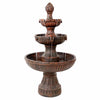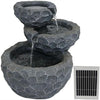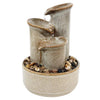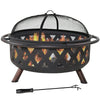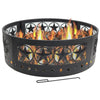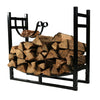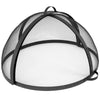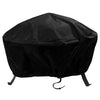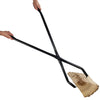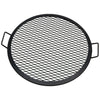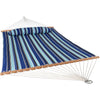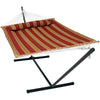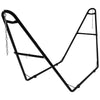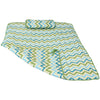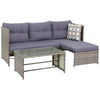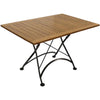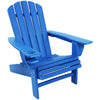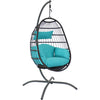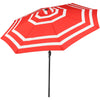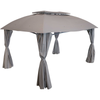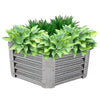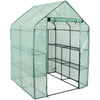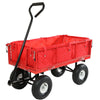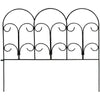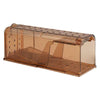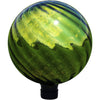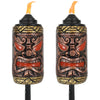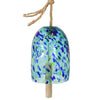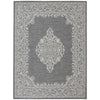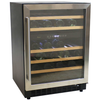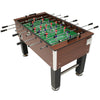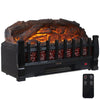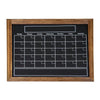Placing a patio furniture set beneath the trees sounds quite relaxing. You get to enjoy the shade of the trees during hot days, and you’re surrounded by the beauty of nature. But what if you happen to have pine trees in your backyard? Evergreens certainly provide year-long greenery, but they do come with an unfortunate drawback, tree sap. Sap is a sticky resin that can fall from the pine needles and land on your patio table, market umbrella, or lawn chairs and once it hardens it is very difficult to get off. Don’t worry! All is not lost and there are simple steps you can take to salvage your patio furniture from pine sap.
How to Remove Tree Sap From Metal Furniture

Step 1 Clean It Quickly
For metal furniture, it is important to remove sap from the furniture piece as soon as you spot it, especially in the summer. If the sap is allowed to sit for too long it can harden in the sunlight and removing it then could damage the finish of your furniture.
Step 2 Do Not Scrape
As important as it is to remove the sap right away, resist the urge to try and pick it away using your fingernails or a tool without first attempting to soften the sap. Not only could you accidentally scratch your own furniture, but this could also lead to you hurting yourself in the process if you use your nails.
Step 3 Use Soap and Water
This classic cleaning go-to is the first method you should try. Using a mild detergent, scour the sap with soap and water for a few minutes and attempt to wipe it away. If you are lucky or the sap has not hardened yet, you might be able to simply remove the sap after a good scrubbing.
Step 4 Soften the Sap
If cleaning it off doesn’t do the job, it is time to break out the big guns. There are a variety of household items that can be used to soften the sap and make it easier to remove. Always test your choice of solvent on a small inconspicuous place in the furniture first before attempting to remove the sap.
- Baking soda: This cleaning staple is used to remove a variety of troublesome substances. Use warm water and baking soda to create a paste and cover the sap with this fizzy mixture. Allow the paste to sit for a few minutes, before resuming the soap and water scrub and wiping it away.
- Cooking Oil: Odds are, you probably have olive or vegetable oil in your kitchen cabinet. Try applying a small amount to a cloth and cover the sap in the oil. After that, scrub it again with soap and water.
- WD-40: WD-40 may be one of the most versatile tools in your home maintenance arsenal. Removing sap is just one of its many uses. Spray the sap directly and allow it to sit for approximately 5 minutes before scrubbing away the remainder with soap and water.
- Rubbing Alcohol: If all else fails, a small amount of rubbing alcohol can be used to remove the most stubborn of tree sap. This should be used as a last resort only as rubbing alcohol can cause discoloration if it is allowed to sit for too long. Dampen a cloth and press it to the area. After approximately 20 seconds, remove the cloth and use soap and water to scrub the sap away.
Step 5 Rinse and Allow to Dry
Once you have scrubbed away all of the sap, rinse the area with water and allow the item to dry in the sun. To help prevent further sap from building up on your metal furniture apply a thin layer of car wax to its surface. This will protect your items from future sap (Plus, it will give your furniture a stylish sheen and help prevent scratches as well).
How to Remove Tree Sap from Wood Furniture
Step 1 Use Soap and Water
Wood furniture requires a slightly different method for sap removal, but soap and water is still a good place to start. Like metal furniture, lather up the area with a mild detergent and warm water. This is especially effective if the sap has not hardened yet.
Step 2 Apply WD-40
Wood furniture is also a good candidate for the WD-40 treatment. Just like metal furniture, apply the WD-40 directly to the tree sap and allow it to sit for 5 minutes. After the time has passed, use soap and water to scrub away any remaining residue.
Step 3 Gently Scrape Away
If the previous two methods did not work, this next step should be performed with a gentle touch and a lot of caution. Using a plastic razor, gingerly scrape away the tree sap from the wood and flush away any residue with soapy water. This step is recommended for small, unnoticeable areas only. Proceed with caution as scraping wood furniture can easily damage the finish or paint if you are too rough.
Step 4 Sand and Refinish
There is one final option that can be used as a last resort for wood furniture. Use a piece of sandpaper to scour away the tree sap and then apply a new coat of wood finish or paint to the piece of furniture.
How to Remove Tree Sap from Plastic Furniture
Step 1 Use Soap and Water
Once again, start out with warm soapy water and a little bit of elbow grease. Fortunately, plastic furniture is highly durable and can stand up to some scrubbing without damaging the material.
Step 2 Soften the Sap
Like metal furniture, there are a few different household options to soften the sap on plastic furniture.
- WD-40: By now, you know the drill, if soap and water fails break out the WD-40. Apply directly to the sap, wait 5 minutes, and then wipe away any residue
- Hand Sanitizer: The alcohol in hand sanitizer provides just the right amount of intensity without causing discoloration. For the best results, look for a hand sanitizer that contains 70% isopropyl alcohol. Always do a test run on an inconspicuous area just to be safe. Apply a few squirts to the tree sap and allow it to sit for two minutes. Use a soft a cloth to wipe away remaining sap.
Step 3 Rinse and Allow to Dry
Once you have removed the bulk of tree sap, rinse away any leftovers and allow the piece of furniture to dry in the sun.
How to Remove Tree Sap from Umbrellas and Outdoor Fabrics

Step 1 Do Not Pick
Unfortunately, a variety of items with outdoor fabric like patio cushions and umbrella canopies can also fall victim to tree sap. Like metal furniture, it is important not to simply tug the sap away. This can lead to rips or tears in the fabric as well as potential discoloring.
Step 2 Create a Cleaning Solution
In order to scrub away the sap from the area, you must first create a diluted cleaning solution. This should give you the cleaning power you need while remaining gentle enough to use on the fabric without staining or discoloration. There are two different options that you can use.
- Vinegar: Vinegar is another time-honored cleaning material that can be used for a variety of cleaning tasks. Create a mixture of 40% white vinegar and 60% water.
- Hand Sanitizer: Just like removing sap from plastic, hand sanitizer can also be used to clean outdoor fabric as well as long as it is properly diluted. Once again use a hand sanitizer with 70% isopropyl alcohol and create a 40% hand sanitizer and 60% water solution.
Step 3 Spot Clean
Once your cleaning solution is ready to go, soak a soft cloth in the solution and apply the cloth to an inconspicuous area as a test. Next, press the cloth to the tree sap and hold it there for two minutes. Another option is to fill a spray bottle with the solution and spritz the area.
Step 4 Apply Nail Polish Remover
For extra stubborn tree sap, you can also use nail polish remover. Choose a nail polish remover that contains acetone and apply it to a soft cloth. Dab at the tree sap gently until the sap loosens.
Step 5 Wash with Laundry Detergent and Air Dry
After you have removed the bulk of the tree sap, get rid of any residue by scrubbing the area with a bit of laundry detergent and warm water. Once you’ve scrubbed it all away, rinse the fabric with cool water and then place the fabric in the sun to dry.
Dealing with tree sap is never a fun task, but knowing how to easily remove it will allow you to relax and enjoy your outdoor space…pine trees and all. For tips on how to keep your patio furniture looking fresh and new, check out this article to learn how to keep your patio cushions clean. Plus, this article will show you some helpful ways to keep your patio umbrella clean season after season.
